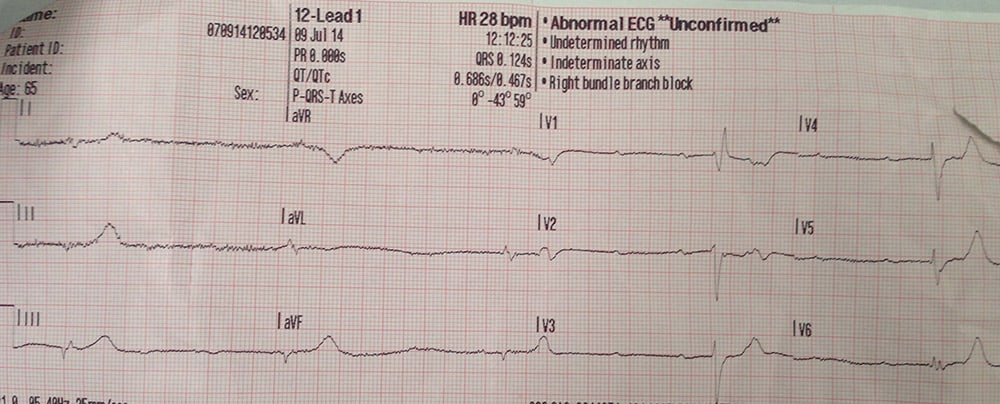A 65 year old male is brought to the emergency department. He has had a collapse at home. When the ambulance arrive, he has altered mental status, and they are having difficulty registering a pulse or getting a blood pressure above 60mmHg systolic.
Here is his ECG:
Using the ECG in 20 seconds method:
Ventricular rate is 5×6= 30 bpm The atrial rate is … difficult to determine- its not regular.
Are there Pwaves?- inverted in aVR and upright in II? – yes there are and yes they are.
Are the P waves associated with QRS? The answer is no- there is disassociation –
It looks like a Mobitz II, however the pp interval is not regular and although it looks like the QRS in V4,5 and 6 comes after a p wave with a first degree block, this doesn’t appear anywhere else. So this is a 3rd degree or I would simply call it a HIGH degree block, where the SA and AV node appear affected.
Is the QRS wide, narrow, tall small or abnormal morphology? – The QRS is a little widened and may represent an RBBB morphology.
ST-T segment morphology: no real acute ischaemic changes can be seen.
PR/QT: PR not an issue as 3rd degree, QT normal.
So it is a high degree block.
In this type of block the patient will normally have severe bradycardia as the attempted perfusing rhythm by the heart will be either a junctional or more often a ventricular initiated rhythm. These rhythms may not adequately perfuse the patient.
The main causes are ischaemia and cardiac medication related) beta/calcium channel blockers or digoxin)
When the patient came in he was externally paced.
The indication for external pacing is simply symptomatic bradycardia that has not responded to initial medical treatment. This may be atropine or even adrenaline in some cases.










